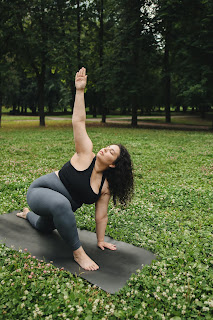Unlock healing with meditation: Ease pain, calm emotions & boost well-being

Introduction to Healing Meditation
In our fast-paced world, the quest for serenity and health is more prevalent than ever. Meditation, once viewed as an esoteric practice rooted in ancient traditions, has now emerged as a beacon of healing and well-being. It offers a sanctuary not only for the mind but also for the body, addressing ailments from chronic pain to high blood pressure, and even enhancing mental health. With a growing body of scientific evidence supporting its health benefits, meditation has transcended its spiritual origins to become a valuable tool in the medical toolkit.
This article explores the transformative power of healing meditation, offering insight into how simple daily practices can lead to significant health improvements. Whether you’re battling stress or seeking a deeper sense of peace, meditation provides a pathway to ease pain, calm emotions, and boost overall well-being. Through an understanding of meditation’s impact on the body and mind, practical techniques for beginners, and ways to incorporate it into daily life, we will uncover how this age-old practice can foster profound healing in the modern age.
How Meditation Facilitates Healing
Meditation has long been heralded for its soothing effects on the mind, but its benefits extend deeply into the physical realm as well. A practice that not only nurtures mental health but also facilitates profound physical healing, meditation can be a pivotal element in the management of various health conditions, from chronic pain to heart health.
Reducing Chronic Pain and Inflammation
Research has shown that regular meditation can significantly reduce the intensity of pain experienced by individuals. A study published in the Journal of Neuroscience has found that just a few sessions of meditation training could reduce pain ratings by as much as 40 percent. Moreover, meditation helps in lowering inflammation in the body, which is often a contributor to chronic pain, by reducing the production of stress hormones and inflammatory agents.
Lowering Blood Pressure
High blood pressure, a risk factor for heart disease and stroke, can be effectively managed through regular meditation. Techniques such as mindfulness and focused attention help calm the nervous system, reducing stress and thereby lowering blood pressure. Studies have demonstrated that meditation can lead to decreases in systolic and diastolic blood pressure, making it a beneficial practice for cardiovascular health.
Enhancing Immune Function
Meditation also boosts the immune system. By reducing stress and fostering a state of balance in the body, meditation can enhance the body’s ability to ward off illness. Regular practitioners often experience fewer illnesses and report better overall health. This is likely due to the positive effects of meditation on the regulation of immune system functions, including inflammation and cell-mediated immunity.
Promoting Emotional Health
Beyond its physical benefits, meditation is a powerful tool for emotional healing. It helps individuals manage symptoms of anxiety and depression and fosters a greater sense of well-being. By practicing meditation, individuals can achieve a state of calm, learn to cope with negative thoughts, and enhance their overall emotional resilience. This emotional stability naturally contributes to physical health, creating a virtuous cycle of wellness.
Supporting Brain Health
Finally, meditation supports overall brain health. It can lead to changes in brain regions associated with memory, sense of self, and empathy. Neuroscientific studies have shown that meditation can increase the gray matter density in parts of the brain related to learning and memory, decrease it in areas associated with anxiety and stress, and strengthen the connections between brain cells. These changes may help delay the aging of the brain and prevent neurodegenerative diseases.
Through these mechanisms, meditation serves as a holistic tool for healing, affecting the body, mind, and spirit. As we continue to uncover the layers of benefits offered by this ancient practice, it becomes clear that meditation is not just a temporary retreat but a transformative journey toward health and longevity.

Meditation Techniques for Beginners
Embarking on the journey of meditation can be transformative, yet the plethora of techniques available might seem overwhelming to newcomers. Here, we outline some accessible methods that beginners can use to start their practice, ensuring a smooth and enjoyable entry into the world of meditation.
Mindfulness Meditation
Mindfulness is one of the simplest forms of meditation, suitable for beginners. It involves paying attention to your thoughts as they pass through your mind. You observe these thoughts without judgment or involvement. Practicing mindfulness can be as straightforward as focusing on your breath or doing a full-body scan to observe sensations.
Focused Attention Meditation
This technique involves concentration on a single object, sound, or visual element. The focus could be on something internal like breath or on external items like a candle flame. The goal is to train the mind to focus and redirect thoughts to one point, which helps increase your attention span and calm your mind.
Guided Meditation
For those who find it difficult to just practice meditation alone, guided meditation can be a great start. This involves meditating with the help of guided imagery or visualization led by a teacher or an audio guide. The guidance usually narrates peaceful scenarios or mantras to help find a calm and relaxed state of mind.
Walking Meditation
Walking meditation is a form of moving meditation that is more dynamic than sitting forms of meditation. It involves focusing on each step and being aware of your body’s movement and your environment. This can be particularly beneficial for those who prefer a more active form of meditation or find sitting still challenging.
Mantra Meditation
In mantra meditation, you silently repeat a calming word, thought, or phrase to prevent distracting thoughts. This method is used in various traditions, including Transcendental Meditation. It’s a form of meditation that helps you to focus and refocus your mind, providing mental clarity.
These techniques offer a gateway into meditation, allowing beginners to explore various facets and find what works best for their needs and preferences. Experimenting with different styles can help maintain engagement and deepen the understanding and benefits of meditation.

Everyday Ways to Incorporate Meditation Into Your Life
Incorporating meditation into a daily routine might seem daunting, especially for those with busy schedules. However, making time for this beneficial practice can be simpler than it appears. Here are some effective ways to integrate meditation into your everyday life, ensuring you reap its many benefits without overwhelming your schedule.
Meditate First Thing in the Morning
Starting your day with meditation can help set a calm, positive tone for the hours ahead. Even a few minutes each morning can help center your thoughts and prepare you mentally to tackle the day’s challenges. This habit also ensures that you prioritize your well-being daily.
Use Breaks Wisely
Short breaks during the day are perfect opportunities for mini-meditation sessions. You can use these intervals to practice breathing exercises or mindfulness. These moments can serve as a mental reset, reducing stress and improving concentration.
Create a Dedicated Space
Having a dedicated space for meditation can enhance your practice and make it a regular part of your life. This doesn’t need to be an elaborate setup—just a quiet, comfortable spot where you can sit undisturbed for a few minutes each day.
Combine Meditation with Regular Activities
Incorporating meditation into activities you already do can make it less of a chore. For example, practicing mindfulness while walking, eating, or even while doing household chores can transform these everyday actions into meditative practices, helping you stay present and engaged.
Use Technology to Your Advantage
There are numerous apps and online resources that offer guided meditations, reminders, and tips for all levels. Leveraging these tools can help keep your practice consistent and introduce you to new meditation techniques and concepts.
End Your Day with Reflection
Ending your day with meditation can be a soothing way to transition from the busyness of your schedule into a peaceful evening. Reflecting on the day, focusing on gratitude, or simply unwinding with some deep breathing before bed can significantly relieve stress and enhance your sleep quality and overall relaxation.
By weaving meditation into the fabric of your daily life, you can enjoy its benefits throughout your day and create a more mindful, peaceful existence. Regular practice not only improves your mental and physical health but also enhances your ability to live fully in the present moment.

Healing via Body Chakras: Understanding the Energy Centers
The body’s chakras are central to our life force, serving as vital energy centers that influence our physical, emotional, and spiritual health. Understanding and balancing these chakras through meditation can lead to profound healing and a sense of well-being.
Root Chakra (Muladhara)
Located at the base of the spine, the Root Chakra is associated with feelings of security and grounding. Meditating on this chakra can help alleviate anxiety and fear, promoting stability and a sense of safety. Techniques such as focusing on deep, grounding breaths or visualizing red energy at the base of the spine can enhance this connection.
Sacral Chakra (Svadhisthana)
This chakra, found just below the navel, is linked to creativity and sexual energy. Balancing the Sacral Chakra through meditation involves visualizing orange light and can lead to improved emotional balance and enhanced creativity. Practices such as yoga or tai chi can also stimulate this chakra.
Solar Plexus Chakra (Manipura)
The Solar Plexus Chakra is the center of self-awareness and confidence. Meditating on this chakra involves focusing on the mid-section and visualizing yellow light, which can boost self-esteem and decision-making capabilities. This practice is particularly helpful for those dealing with stress or depression.
Heart Chakra (Anahata)
Located in the chest, the Heart Chakra is the center of love and compassion. Meditation that focuses on this chakra often involves deep breathing exercises to fill the area with green light, fostering an ability to give and receive love more freely. It is particularly beneficial for those recovering from emotional hurt.
Throat Chakra (Vishuddha)
The Throat Chakra governs communication. Meditating on this area can help overcome inhibitions and enable honest and clear communication. Visualizing blue light around the throat can clear blockages that might be affecting self-expression.
Third Eye Chakra (Ajna)
Situated between the eyebrows, the Third Eye Chakra is linked to intuition and foresight. Focusing meditation on this chakra can enhance one’s clarity and ability to concentrate, often visualizing indigo light. This is beneficial for those seeking to deepen their meditation practice or enhance their spiritual awareness.
Crown Chakra (Sahasrara)
The Crown Chakra, located at the top of the head, connects us to higher states of consciousness. Meditation focused on this chakra often involves visualizing violet light and can lead to spiritual growth and a profound sense of peace and connection to the world.
Understanding and working with these chakras through meditation not only promotes physical health and emotional balance but also opens pathways to deeper spiritual experiences, aligning the body’s energies and fostering an overall sense of harmony and wellness.

Embracing Meditation for Holistic Healing and Well-being
As we’ve explored throughout this article, meditation is more than just a practice of quiet contemplation—it is a powerful healing tool that can profoundly impact every aspect of our well-being. From the sleep problems alleviating chronic pain and reducing high blood pressure to enhancing mental health conditions and boosting the immune system, the benefits of meditation are both extensive and scientifically supported.
Regular meditation practice fosters a deep connection between the mind and body, facilitating a state of balance and harmony that can transform health. By engaging in daily meditation, individuals can unlock positive effects that go beyond physical health, enhancing emotional stability and promoting a peaceful mental state. This practice also encourages self-awareness, helps in managing negative thoughts, and supports overall health.
Moreover, the act of meditating itself can be adapted to fit into any lifestyle, whether through brief mindfulness exercises, structured guided meditation sessions, or integrative practices like yoga and tai chi. Each session helps to fortify the life force within us, balancing our energy centers and grounding us in the present moment.
In embracing meditation, we not only invest in our health but also open the door to a life characterized by greater peace, improved health conditions, and enhanced ability to cope with the stresses of the modern world. Let meditation be your pathway to recovering your inner peace and harnessing your body’s natural healing capabilities.
As we conclude, remember that the journey of meditation is one of personal exploration and discovery. Whether you’re looking to heal physical ailments, seek relief from stress, or find a deeper sense of spiritual connection, meditation offers a versatile and accessible solution.





